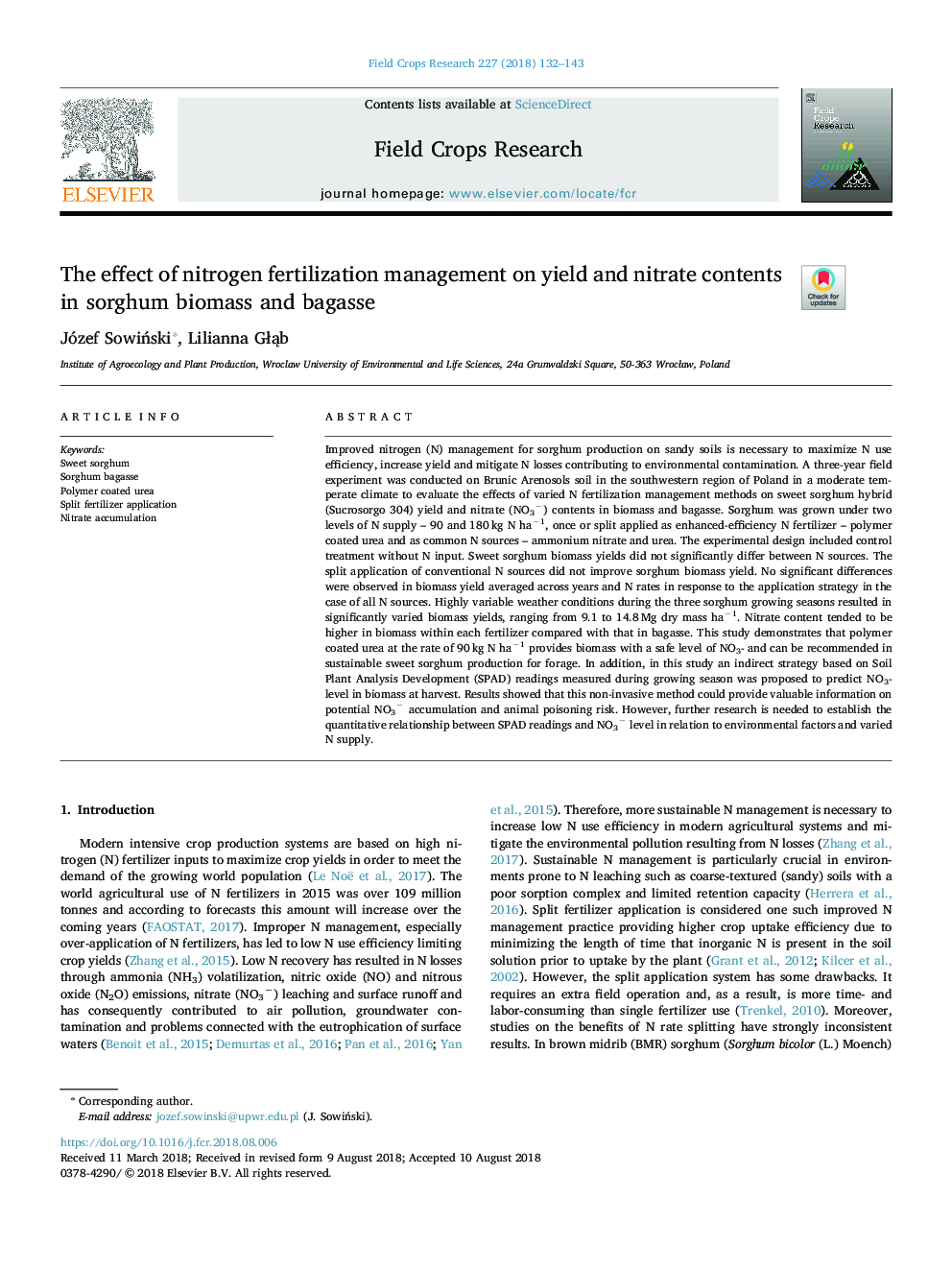| کد مقاله | کد نشریه | سال انتشار | مقاله انگلیسی | نسخه تمام متن |
|---|---|---|---|---|
| 8879060 | 1624636 | 2018 | 12 صفحه PDF | دانلود رایگان |
عنوان انگلیسی مقاله ISI
The effect of nitrogen fertilization management on yield and nitrate contents in sorghum biomass and bagasse
ترجمه فارسی عنوان
تأثیر مدیریت کوددهی نیتروژن بر عملکرد و محتوای نیترات در زیست توده و ذرت
دانلود مقاله + سفارش ترجمه
دانلود مقاله ISI انگلیسی
رایگان برای ایرانیان
کلمات کلیدی
سورگوم شیرین، ذرت سورگوم، پلیمر اوره پوشش داده شده کاربرد تقسیم کود، تجمع نیترات،
موضوعات مرتبط
علوم زیستی و بیوفناوری
علوم کشاورزی و بیولوژیک
علوم زراعت و اصلاح نباتات
چکیده انگلیسی
Improved nitrogen (N) management for sorghum production on sandy soils is necessary to maximize N use efficiency, increase yield and mitigate N losses contributing to environmental contamination. A three-year field experiment was conducted on Brunic Arenosols soil in the southwestern region of Poland in a moderate temperate climate to evaluate the effects of varied N fertilization management methods on sweet sorghum hybrid (Sucrosorgo 304) yield and nitrate (NO3â) contents in biomass and bagasse. Sorghum was grown under two levels of N supply - 90 and 180âkg N haâ1, once or split applied as enhanced-efficiency N fertilizer - polymer coated urea and as common N sources - ammonium nitrate and urea. The experimental design included control treatment without N input. Sweet sorghum biomass yields did not significantly differ between N sources. The split application of conventional N sources did not improve sorghum biomass yield. No significant differences were observed in biomass yield averaged across years and N rates in response to the application strategy in the case of all N sources. Highly variable weather conditions during the three sorghum growing seasons resulted in significantly varied biomass yields, ranging from 9.1 to 14.8âMg dry mass haâ1. Nitrate content tended to be higher in biomass within each fertilizer compared with that in bagasse. This study demonstrates that polymer coated urea at the rate of 90âkg N haâ1 provides biomass with a safe level of NO3- and can be recommended in sustainable sweet sorghum production for forage. In addition, in this study an indirect strategy based on Soil Plant Analysis Development (SPAD) readings measured during growing season was proposed to predict NO3- level in biomass at harvest. Results showed that this non-invasive method could provide valuable information on potential NO3â accumulation and animal poisoning risk. However, further research is needed to establish the quantitative relationship between SPAD readings and NO3â level in relation to environmental factors and varied N supply.
ناشر
Database: Elsevier - ScienceDirect (ساینس دایرکت)
Journal: Field Crops Research - Volume 227, 1 October 2018, Pages 132-143
Journal: Field Crops Research - Volume 227, 1 October 2018, Pages 132-143
نویسندگان
Józef SowiÅski, Lilianna GÅÄ
b,
